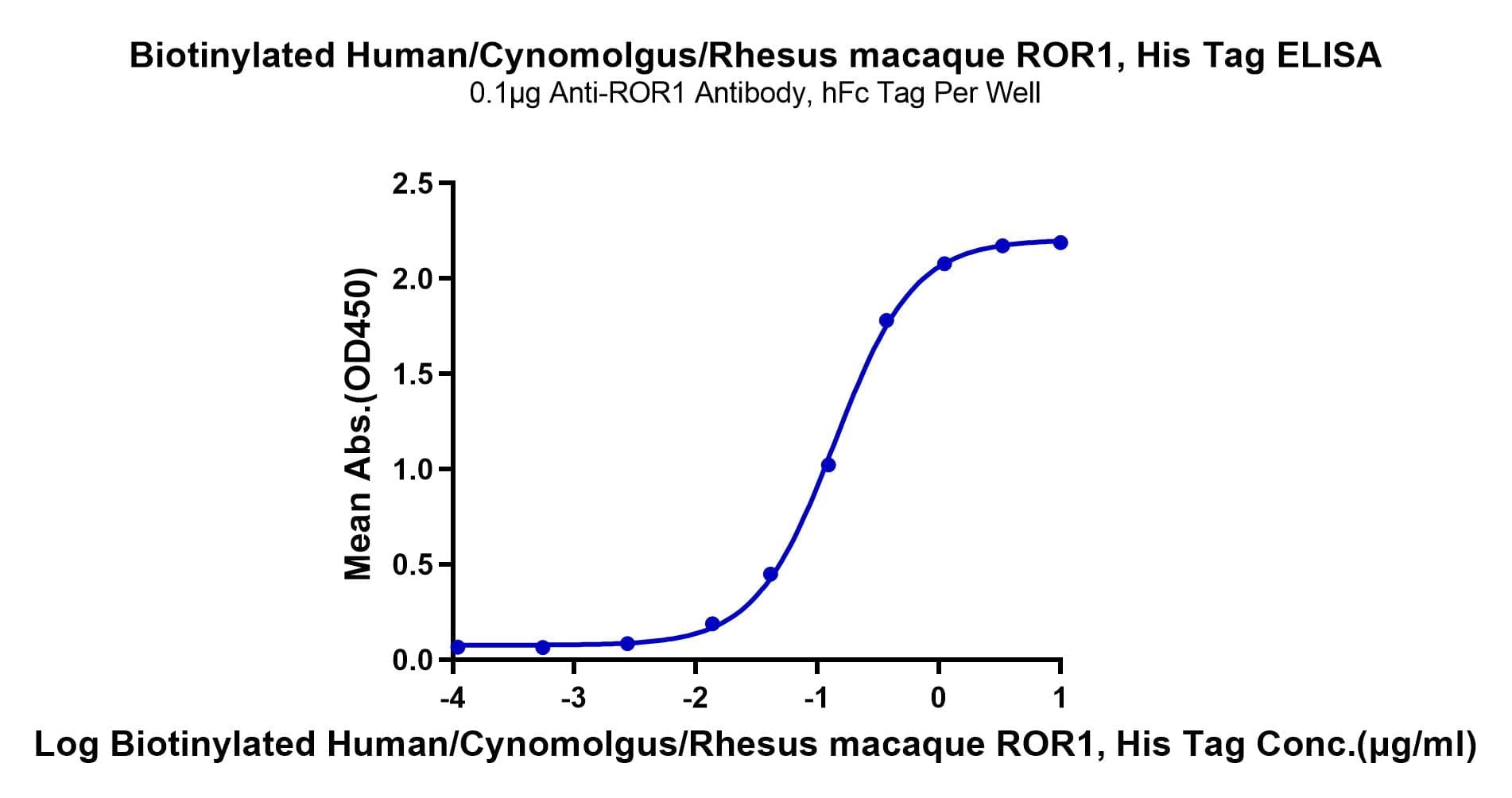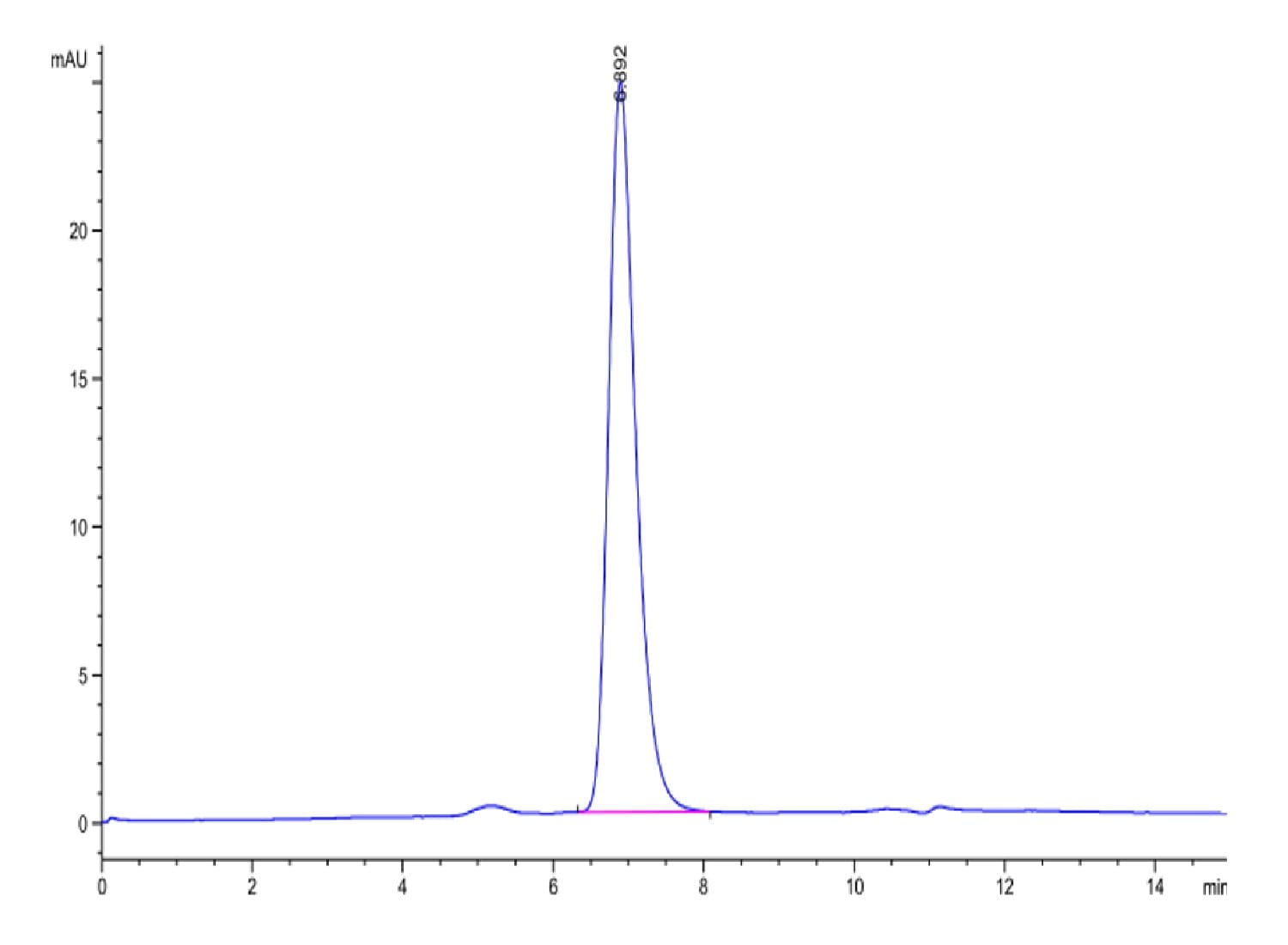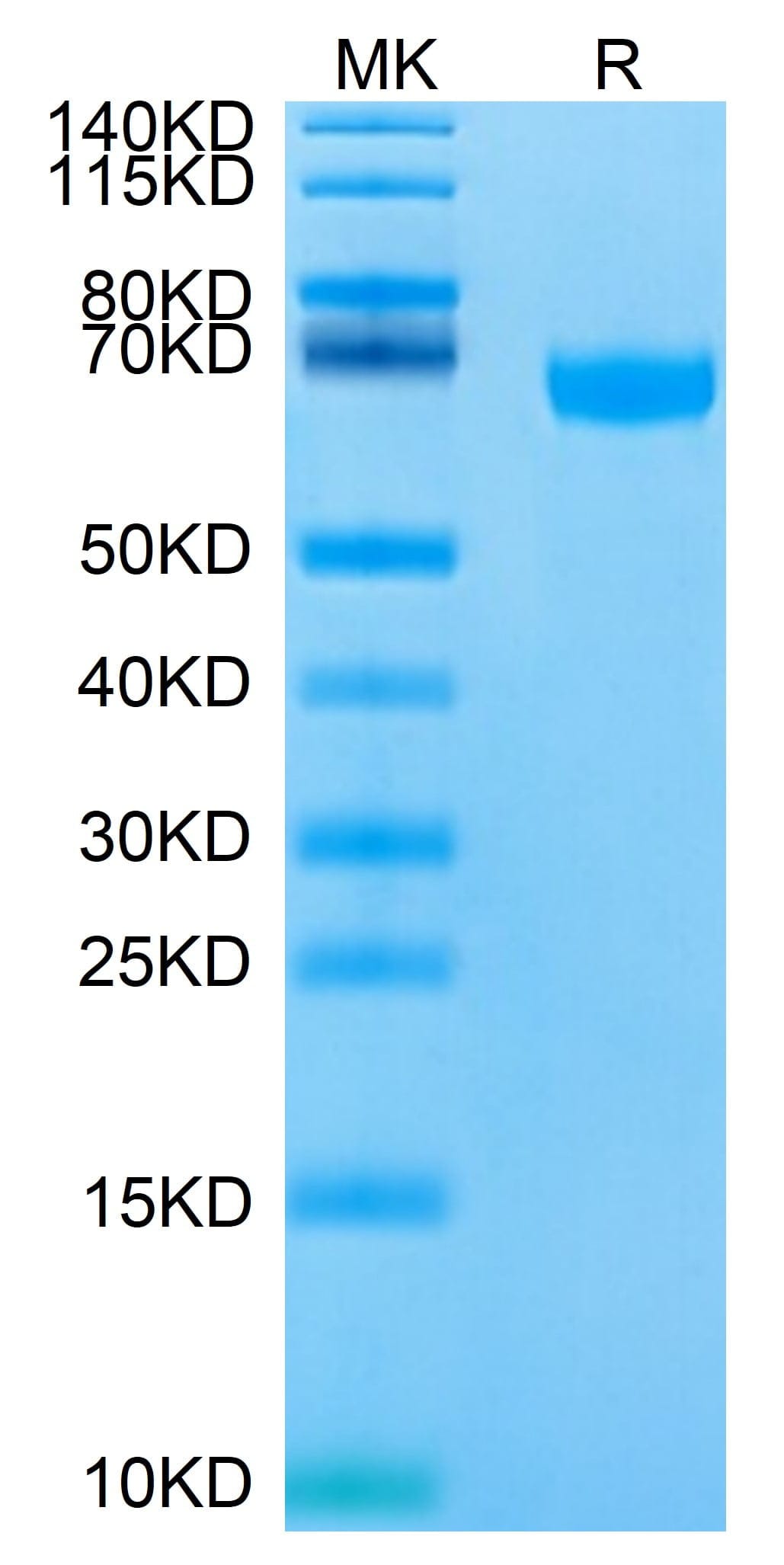| Weight | 1 lbs |
|---|---|
| Dimensions | 9 × 5 × 2 in |
| express system | HEK293 |
| product tag | C-His-Avi |
| purity | > 95% as determined by Tris-Bis PAGE;> 95% as determined by HPLC |
| background | ROR1 (Receptor tyrosine kinase-like orphan receptor 1), also known as neurotrophic tyrosine kinase receptor-related 1 (NTRKR1), is a member of the ROR family within receptor tyrosine kinases (RTK) superfamily. Two ROR family members (ROR1 and ROR2) have been identified and are characterized by the intracellular tyrosine kinase domains, highly related to those of the Trk-family receptor tyrosine kinases, and by the extracellular Frizzled-like cysteine-rich domains and kringle domains, which are common to receptors of the Wnt family members. |
| molecular weight | The protein has a predicted MW of 44.9 kDa. Due to glycosylation, the protein migrates to 55-70 kDa based on Tris-Bis PAGE result. |
| available size | 100 µg, 500 µg |
| endotoxin | Less than 1EU per μg by the LAL method. |
Biotinylated Human/Cynomolgus/Rhesus macaque ROR1 Protein 4784
$525.00 – $1,750.00
Summary
- Expression: HEK293
- Functional: Yes (ELISA)
- Amino Acid Range: Gln30-Glu403
Biotinylated Human/Cynomolgus/Rhesus macaque ROR1 Protein 4784
| protein |
|---|
| Size and concentration 100, 500µg and lyophilized |
| Form Lyophilized |
| Storage Instructions Valid for 12 months from date of receipt when stored at -80°C. Recommend to aliquot the protein into smaller quantities for optimal storage. Please minimize freeze-thaw cycles. |
| Storage buffer Shipped at ambient temperature. |
| Purity > 95% as determined by Tris-Bis PAGE |
| target relevance |
|---|
| ROR1 (Receptor tyrosine kinase-like orphan receptor 1), also known as neurotrophic tyrosine kinase receptor-related 1 (NTRKR1), is a member of the ROR family within receptor tyrosine kinases (RTK) superfamily. Two ROR family members (ROR1 and ROR2) have been identified and are characterized by the intracellular tyrosine kinase domains, highly related to those of the Trk-family receptor tyrosine kinases, and by the extracellular Frizzled-like cysteine-rich domains and kringle domains, which are common to receptors of the Wnt family members. |
| Protein names Inactive tyrosine-protein kinase transmembrane receptor ROR1 (Neurotrophic tyrosine kinase, receptor-related 1) |
| Gene names ROR1,ROR1 NTRKR1 |
| Protein family Protein kinase superfamily, Tyr protein kinase family, ROR subfamily |
| Mass 9606Da |
| Function Has very low kinase activity in vitro and is unlikely to function as a tyrosine kinase in vivo (PubMed:25029443). Receptor for ligand WNT5A which activate downstream NFkB signaling pathway and may result in the inhibition of WNT3A-mediated signaling (PubMed:25029443, PubMed:27162350). In inner ear, crucial for spiral ganglion neurons to innervate auditory hair cells (PubMed:27162350). |
| Catalytic activity #N/A |
| Subellular location Membrane ; Single-pass type I membrane protein. Cell projection, axon . |
| Tissues Expressed strongly in human heart, lung and kidney, but weakly in the CNS. Isoform Short is strongly expressed in fetal and adult CNS and in a variety of human cancers, including those originating from CNS or PNS neuroectoderm. |
| Target Relevance information above includes information from UniProt accession: Q01973 |
| The UniProt Consortium |
Data
Publications
Publications
| pmid | title | authors | citation |
|---|---|---|---|
| We haven't added any publications to our database yet. | |||
Protocols
| relevant to this product |
|---|
Documents
| # | ||
|---|---|---|
| Please enter your product and batch number here to retrieve product datasheet, SDS, and QC information. | ||

















